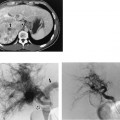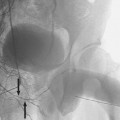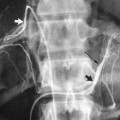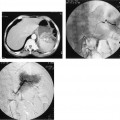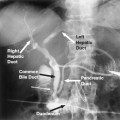1
Vascular and Interventional Radiology
A Brief History
Within months of Wilheim Roentgen’s discovery of the x-ray in 1895, Lindenthal produced the first contrast-enhanced radiograph of the veins of the hand.1,2 Clinical application of contrast angiography, however, would take more than two decades. From the 1920s through the 1950s, arteriography was performed infrequently—and by the translumbar approach. Vascular surgery was in its nascent stage, and diagnoses were made clinically without much diagnostic testing. For example, in 1923, Leriche described a group of young men with decreased or absent femoral pulses, bilateral claudication, and impotence, all on the basis of clinical findings and history. Leriche called this entity aortitis terminalis and suggested the possibility of surgical intervention.3 Yet the diagnostic arteriogram as a routine clinical tool was years away.
In 1953, Seldinger described a transfemoral arterial access technique that used a puncture needle and guide-wire, which allowed selective catheterization.4 Coincidentally, the first use of a cloth vascular bypass graft also had just been reported.5 During this decade, diagnostic arteriography of the cardiac and peripheral circulations was increasingly being used and refined. In the 1960s, radiologists began to develop “interventional” procedures. Many point to the landmark article that first described percutaneous transluminal angioplasty (PTA) by Dotter and Judkins as the birth of interventional radiology.6,7 Dotter and Judkins summarized their article by suggesting that there would be “refinements of technique as well as further clarification” of the role of this attack on arteriosclerotic obstructions.” The percutaneous transluminal treatment described in this article became a basis for an emerging class of minimally invasive therapies.
In 1974, the Society of Cardiovascular Radiology was founded with a membership of about 30 academic angiographers. In addition to diagnostic angiography, members of this society were beginning to expand their interventions: in addition to “Dottering” obstructive lesions, they were beginning to treat gastrointestinal bleeding and pelvic trauma by pharmacologic infusion or embolization.8–13 Techniques for nonsurgical splenectomy and intravascular foreign body attraction soon were popularized.14 The Society was later renamed the Society of Cardiovascular and Interventional Radiology.15 Gruentzig and others refined the Dotter angioplasty technique by using an expandable balloon on a catheter shaft, which allowed smaller punctures to be made for arterial access and larger vessels to be dilated.16,17 Real time ultrasound and computed tomography scanning allowed nonvascular percutaneous interventions to be developed and refined, notably intraabdominal abscess drainage.18,19 This revolutionized the care of many patients with abdominal infections: Abdominal pus was no longer a surgical disease.
By 1985, small-vessel balloons and steerable guidewires became commercially available, allowing PTA of the infrapopliteal vessels.20–23 Inferior vena cava filters, although still large in profile, were being placed by vascular and interventional radiologists as well as by surgical cut-down.24 Within a few years, low osmolar contrast agents were to be commonly used for peripheral arteriography, increasing safety and patient comfort. Digital subtraction replaced cut film, and the multiplanar C-arm became standard in angiography and interventional radiology suites; these two technical advances allowed diagnostic and interventional procedures to proceed more rapidly, eliminating the delays for processing cut films and for repositioning patients. The volume of studies that could be performed in a working day now could be expanded because the time per study was shortened; the interventional radiologists could expand their practices and push the envelope. The advent of smaller-profile catheters and hydrophilic guidewires allowed more expedient selection of smaller arteries for superselective embolization and infusion. The clinical use of thrombolytic agents began in the late 1980s for acute arterial and venous occlusions. Renal angioplasty became a first line technique.25
Stay updated, free articles. Join our Telegram channel

Full access? Get Clinical Tree



